
How Melbourne Is Shaping the Future of Oral Health in Australia
Melbourne has long been known for its culture, innovation, and healthcare leadership. Today, the city is carving a distinct role as a pioneer in oral health. From cutting-edge dental technologies to a community-centric approach to care, Melbourne dentists are driving nationwide improvements in oral health awareness, accessibility, and outcomes. As a result, the city’s dental landscape is not just thriving—it’s influencing the future of dentistry across Australia.
Technological Innovation in Dental Practices
One of the most significant contributions Melbourne makes to the oral health industry is its embrace of modern dental technologies. Clinics across the city are investing in tools such as 3D printing for prosthetics, intraoral scanners for more accurate imaging, and AI-driven diagnostic software. These innovations help Melbourne dentists deliver faster, more precise, and less invasive treatments.
Digital dentistry has also enabled more personalized treatment plans, particularly in orthodontics and cosmetic procedures. Invisalign, digital smile design, and laser dentistry are becoming standard in many clinics, helping patients achieve better results with greater comfort. These technologies are now being adopted by dental professionals across Australia, largely inspired by Melbourne’s early adoption and successful integration.
A Strong Focus on Preventive Care
While technology is transforming how dental treatments are delivered, Melbourne dentists are equally focused on preventive care—a key to improving long-term oral health outcomes. Educational campaigns, school dental programs, and community health initiatives are helping Melbourne residents become more proactive about their oral hygiene.
Many clinics are expanding their role beyond just treatment, offering routine oral health education and checkups at workplaces, schools, and public health centers. This shift toward preventive care is reducing the incidence of severe dental issues and is being viewed as a model for national replication.
Tele-dentistry and Increased Access
One of the key challenges in oral health across Australia has been equitable access, especially in rural and remote areas. Melbourne has been at the forefront of piloting tele-dentistry initiatives, allowing patients to consult with professionals virtually for assessments, follow-ups, and oral hygiene guidance.
These services—launched by several Melbourne dentists during the COVID-19 pandemic—have now evolved into permanent offerings. The convenience and affordability of tele-dentistry are helping patients receive timely care and making oral health services more inclusive. Other cities and regions are starting to follow suit, modeling their virtual care offerings on Melbourne’s success stories.
Integration of Holistic and Cosmetic Dentistry
Another way Melbourne is shaping the future of oral care is by blending traditional dentistry with wellness and aesthetic-focused services. A growing number of clinics now offer holistic dentistry, which emphasizes the connection between oral health and overall well-being. This includes treatments that consider nutritional guidance, sleep health, and biocompatible materials for fillings and prosthetics.
Cosmetic dentistry, too, is booming in Melbourne. Patients are increasingly seeking services such as teeth whitening, veneers, and smile makeovers. Melbourne dentists have responded with advanced techniques and minimally invasive procedures that align with modern aesthetic expectations while maintaining oral health integrity.
Professional Development and Education
Melbourne is also a hub for dental education and research. Institutions like the University of Melbourne lead in dental research, contributing to innovations in materials, procedures, and public health strategies. Continuing professional development programs and conferences held in the city attract dentists from across the country, making Melbourne a key center for knowledge sharing and skill enhancement.
In this environment, Melbourne dentists remain at the forefront of clinical excellence, equipped with the latest knowledge and best practices. The ripple effect is clear: as these professionals mentor others and speak at national forums, they elevate the standard of care across Australia.
Addressing Diversity and Inclusivity
Melbourne’s multicultural population has also led to more inclusive and culturally sensitive oral healthcare practices. Clinics often employ multilingual staff and offer culturally tailored education materials to better serve diverse communities. This model is being recognized as a benchmark for other Australian cities aiming to close the gap in health literacy and improve trust in the healthcare system.
Indigenous oral health programs based in Melbourne have also gained national attention, especially those focused on culturally safe care and community empowerment. These initiatives play a vital role in reducing oral health disparities and reinforcing the importance of inclusive practice across the dental profession.
Looking Ahead: Melbourne as a Blueprint
The progress made by Melbourne dentists isn’t just transforming their own city—it’s laying the groundwork for a stronger, more adaptive oral health system in Australia. As technology, education, and patient-centered care continue to evolve, Melbourne is expected to remain a leader in shaping dental standards nationwide.
By embracing innovation, accessibility, inclusivity, and prevention, Melbourne is demonstrating what a future-focused oral care system can look like. The result is not just healthier smiles across Victoria, but a roadmap for excellence that’s inspiring practices and policies across the entire country.
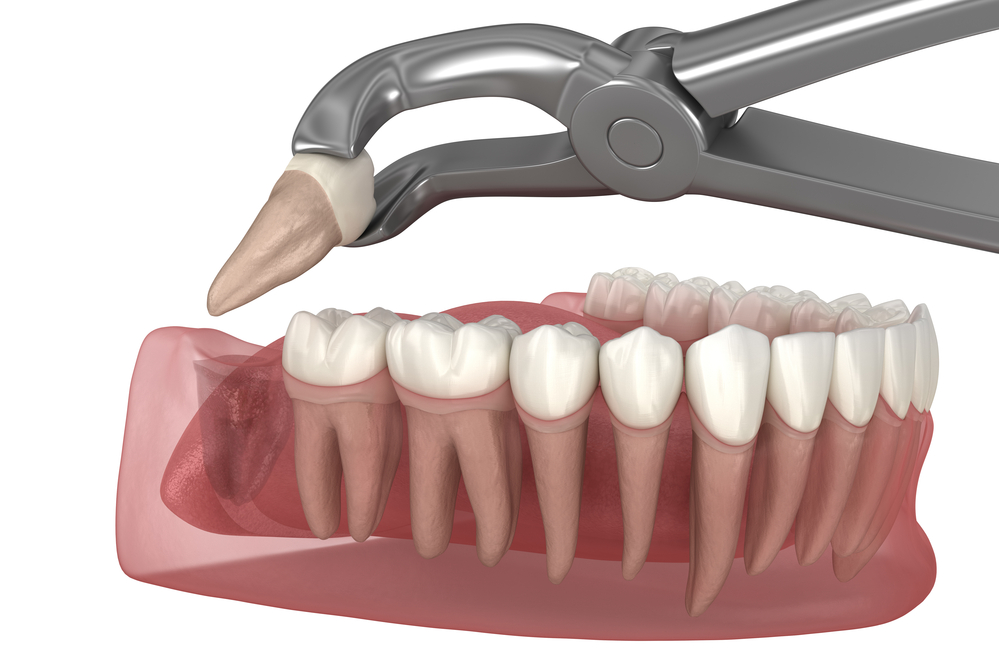
How to Prepare for Your Wisdom Tooth Surgery
Wisdom tooth removal is a common dental procedure, but it can still feel daunting if it’s your first time undergoing oral surgery. Proper preparation can help ease anxiety, reduce complications, and ensure a smoother recovery. Whether you’re getting one tooth out or all four, here’s a comprehensive guide to help you feel confident and ready for your wisdom tooth surgery.
Why Wisdom Tooth Removal Is Necessary
Wisdom teeth, or third molars, typically appear between the ages of 17 and 25. For some, they erupt without issues. For many others, these teeth become impacted, grow at odd angles, or crowd nearby teeth. In such cases, dentists often recommend wisdom tooth removal to prevent pain, infections, and long-term dental complications.
1. Talk to Your Oral Surgeon or Dentist
Start by scheduling a consultation with your dentist or oral surgeon. This appointment is essential to:
– Review X-rays to assess the position of your wisdom teeth.
– Discuss any health conditions or medications you’re currently taking.
– Go over the surgical plan, including how many teeth will be removed.
– Decide on the type of anesthesia or sedation you’ll receive.
Don’t hesitate to ask questions—knowing what to expect during and after the procedure can ease a lot of anxiety.
2. Arrange Transportation
Most wisdom tooth removal procedures involve sedation or general anesthesia, which means you won’t be in any shape to drive afterward. Ask a family member or friend to accompany you, drive you home, and ideally stay with you for a few hours post-surgery.
3. Plan Your Recovery Space
Set up a comfortable area at home where you can rest and recover. Include:
– Extra pillows to keep your head elevated.
– Ice packs for swelling.
– Entertainment like books, movies, or music to pass the time.
– Easily accessible chargers, remotes, or water.
Having your space ready before surgery will save you from scrambling when you’re groggy and sore.
4. Stock Up on Soft Foods
After wisdom tooth removal, chewing will be uncomfortable and possibly painful for several days. Stock your fridge and pantry with soft, easy-to-eat foods such as:
– Yogurt
– Mashed potatoes
– Applesauce
– Pudding
– Smoothies (without a straw—sucking can cause dry socket)
– Soups and broths (lukewarm, not hot)
Avoid crunchy, spicy, or hot foods, and absolutely no straws for at least a week.
5. Follow Pre-Operative Instructions
Your dentist or surgeon will give you specific guidelines to follow before surgery. These may include:
– Fasting: Don’t eat or drink for at least 6–8 hours before surgery if you’re having IV sedation or general anesthesia.
– Medication adjustments: Some prescriptions and over-the-counter drugs may need to be paused.
– Avoiding alcohol and tobacco: Both can increase your risk of complications and slow healing.
Follow these instructions carefully—they’re crucial for your safety during the procedure.
6. Dress Comfortably
On the day of surgery, wear loose, comfortable clothing and short sleeves (especially if you’re getting an IV). Avoid makeup, jewelry, and contact lenses. Bring any necessary forms, ID, and payment details to your appointment.
7. Know the Risks and Recovery Timeline
Like any surgery, wisdom tooth removal carries some risks, including infection, swelling, dry socket, or temporary nerve numbness. While most people recover within a week, more complex extractions might take longer.
Here’s a general timeline:
– Day 1–2: Expect swelling, drowsiness, and bleeding. Stick to rest, ice packs, and soft foods.
– Day 3–4: Swelling may peak. You might feel sore but more alert.
– Day 5–7: Pain should decrease, and you can start to reintroduce normal foods gradually.
– 1–2 weeks: Most people are fully recovered, though deeper surgical sites may take longer to close fully.
8. Prepare Emotionally
It’s normal to feel nervous, especially if this is your first surgical experience. Practicing relaxation techniques like deep breathing or meditation in the days leading up to surgery can help. Talk openly with your dental team about any fears—they’re there to support you.
9. Post-Surgery Support
Ask someone to help you for the first 24 hours. You might be groggy, sore, and unable to cook or manage medications. Having someone nearby can make a big difference in your comfort and safety.
Also, make sure to have your pain meds and any prescribed antibiotics ready to go before the surgery. Starting them on schedule can help prevent unnecessary discomfort or complications.
10. Plan for Downtime
Don’t try to rush back to work or school. Even if the procedure is straightforward, your body needs time to heal. Plan for a few days of rest, and avoid strenuous activity, bending over, or heavy lifting.
Wisdom tooth removal might sound intimidating, but with the right preparation, it can be a smooth and manageable process. From planning your recovery space to understanding the procedure and recovery timeline, each step you take in advance can ease your mind and set you up for a speedy recovery.
By staying informed and prepared, you’ll be back to smiling—without those problematic molars—in no time.
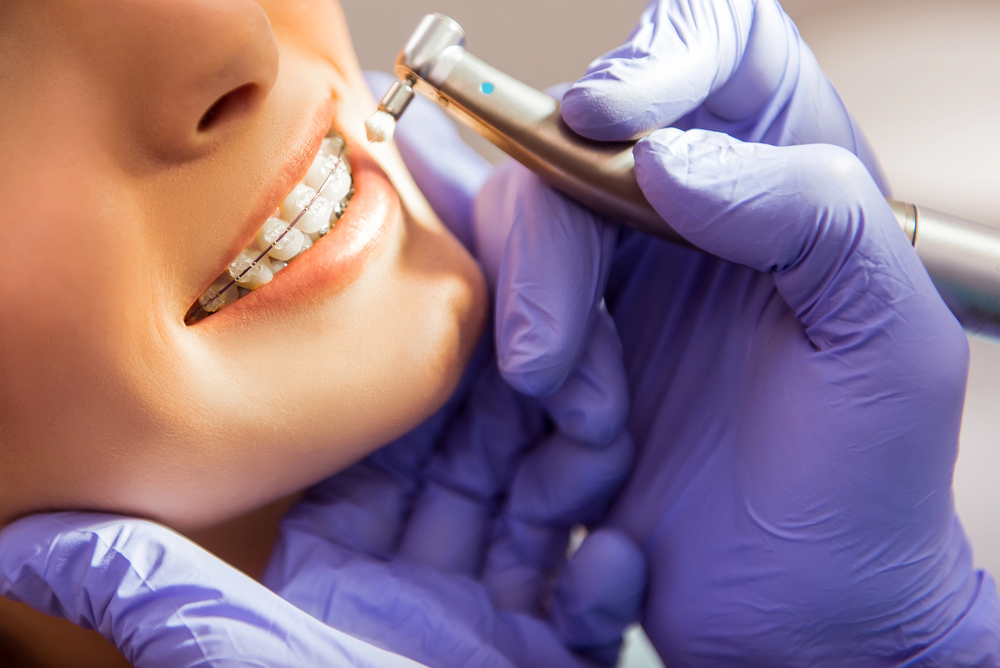
Australia’s Booming Cosmetic Dentistry Market: What Patients Are Asking For in 2025
Cosmetic dentistry in Australia is experiencing an unprecedented boom, with more patients than ever seeking to enhance their smiles through innovative and accessible treatments. The landscape of aesthetic dentistry has evolved significantly over the last few years, driven by technology, social media, and a growing cultural emphasis on self-care and confidence. As we move through 2025, it’s clear that Australian patients know what they want—and they’re not afraid to ask for it.
Among the most in-demand services, teeth whitening continues to top the list. But that’s only the beginning. From digital smile design to minimally invasive veneers, here’s a look at what’s trending in Australia’s cosmetic dentistry market today.
A Brighter Smile: Teeth Whitening Still Rules
Teeth whitening remains the crown jewel of cosmetic dental procedures in Australia. It’s affordable, non-invasive, and delivers instant results—three factors that make it appealing to people across all age groups. With over-the-counter options more accessible than ever, Australians are taking the first steps toward cosmetic enhancement from the comfort of their homes.
However, professional teeth whitening treatments still reign supreme in terms of safety and effectiveness. Dentists report a steady stream of patients opting for in-chair whitening procedures that offer long-lasting brightness with minimal sensitivity. In 2025, newer formulations of peroxide gels, light-accelerated systems, and custom tray options are delivering more dramatic results in less time. Many practices now even offer “whitening membership plans” as part of their aesthetic dentistry packages, making it easier for patients to maintain that dazzling look year-round.
The Social Media Effect
Much of the growth in cosmetic dentistry can be attributed to the influence of social media platforms like Instagram and TikTok. Australians, particularly younger demographics, are increasingly exposed to content showcasing smile makeovers, influencer endorsements, and “before-and-after” transformations. This visual culture has normalized aesthetic treatments, making procedures like teeth whitening as common as getting a haircut.
Patients now arrive at dental clinics with screenshots and influencer posts, asking for the “exact look” they saw online. Dentists are adapting by offering digital smile simulations and augmented reality previews, allowing patients to see their future smiles before committing to procedures.
Personalised Smile Design on the Rise
Customisation is a significant driver of cosmetic dentistry trends in 2025. Australian patients are seeking more than just cookie-cutter veneers—they want a smile that suits their facial features, lifestyle, and personality. This has led to the rise of digital smile design (DSD) platforms that allow dentists to plan and visualise procedures with stunning accuracy.
Through AI-driven imaging, patients can co-create their smile alongside their dentist, selecting tooth shape, shade, and alignment. Whether it’s a natural enhancement or a Hollywood-worthy overhaul, the focus is on creating results that look and feel authentic.
Minimally Invasive Treatments Gaining Popularity
There’s a clear shift in patient preferences toward minimally invasive cosmetic procedures. Many Australians now favour options that preserve natural tooth structure, such as composite bonding or no-prep veneers. These procedures offer an effective way to correct chips, gaps, or discoloration without the need for aggressive reshaping.
This trend aligns with the growing health-conscious mindset of the population, where preserving long-term oral health is just as important as aesthetic outcomes. Dentists report that patients are asking more questions about procedure longevity, maintenance, and the impact on their natural teeth.
Whitening for All: Inclusivity and Access
One noteworthy trend in 2025 is the diversification of the cosmetic dentistry patient base. Treatments like teeth whitening are no longer limited to younger people or those in urban centres. Thanks to better access to dental care and the normalization of aesthetic treatments, people of all ages and backgrounds—from retirees to tradespeople—are exploring their cosmetic options.
Mobile clinics and teledentistry have also made a big impact, particularly in rural and regional Australia. These services bring procedures like whitening consultations and digital smile assessments directly to underserved communities, making cosmetic dentistry more inclusive than ever before.
Payment Plans Fueling the Boom
The rise in demand for cosmetic dentistry has also been supported by flexible financing options. In 2025, many Australian dental clinics offer interest-free payment plans, “smile subscriptions,” and buy-now-pay-later services, allowing patients to spread the cost of procedures like teeth whitening or veneers over manageable instalments.
This financial accessibility has removed one of the biggest barriers to entry, allowing more people to invest in their smiles without compromising their budgets.
As technology continues to advance and the societal focus on aesthetics grows, Australia’s cosmetic dentistry market shows no signs of slowing down. Patients are becoming more informed, more confident, and more eager to invest in treatments that enhance not just their appearance, but their self-esteem and quality of life.
Whether it’s a subtle touch-up with teeth whitening or a complete smile transformation, Australians are embracing the idea that a better smile is within reach—and well worth the investment.
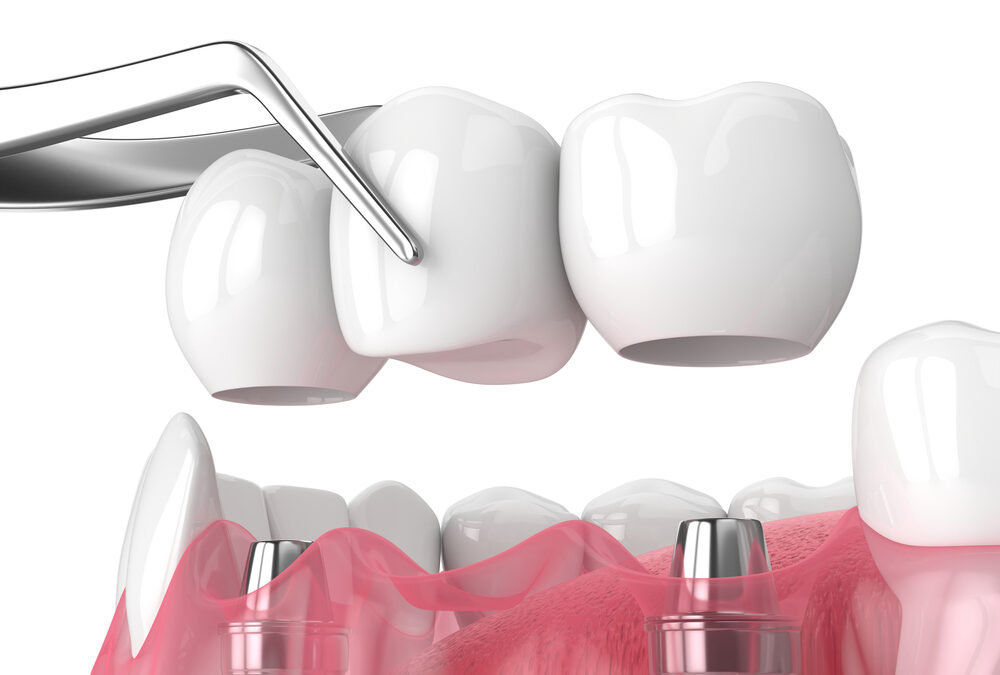
Smart Dental Implants: The Next Step in Digital Dentistry?
Dental implant technology has advanced significantly over the past few decades. Today, smart dental implants are emerging as the next frontier in digital dentistry, integrating cutting-edge technology with traditional implantology. These innovative implants have the potential to improve treatment success rates, enhance patient monitoring, and streamline the overall implant process. With the integration of dental software, smart dental implants are revolutionizing restorative dentistry, making procedures like single implants more precise and predictable.
What Are Smart Dental Implants?
Smart dental implants are revolutionizing restorative dentistry by integrating advanced technology to enhance functionality and longevity. Unlike traditional options, these intelligent devices can monitor bone health, detect infections, and even facilitate better integration with surrounding tissues. For patients requiring single implants, smart technology ensures precise placement, improved stability, and real-time health tracking, leading to better long-term outcomes. With innovations like AI-powered diagnostics and biofeedback sensors, smart dental implants offer a future where dental restorations are not just passive replacements but actively contribute to oral health management.
Unlike traditional implants, which rely on periodic manual check-ups, smart dental implants offer a proactive approach to dental care. They provide insights into osseointegration (the process of implant fusion with the jawbone) and help detect early-stage implant failures before they become severe.
The Role of Dental Software in Smart Implants
Dental software plays a crucial role in the success of smart dental implants. It processes data from the implant’s sensors and converts it into actionable insights. Here’s how dental software enhances the functionality of smart implants:
1. Real-Time Monitoring – Dental software can continuously track the status of a smart implant, providing alerts in case of potential failures or infections.
2. AI and Predictive Analytics – Machine learning algorithms analyze implant data to predict complications before they occur, improving patient outcomes.
3. Integration with Digital Workflows – The data collected from smart implants can seamlessly integrate with CBCT scans, intraoral scans, and CAD/CAM systems to optimize treatment planning.
4. Remote Patient Management – Patients with smart implants can be monitored remotely, reducing the need for frequent in-office visits and enhancing post-operative care.
Advantages of Smart Dental Implants
The development of smart dental implants presents numerous advantages for both patients and dental professionals. Some key benefits include:
– Increased Implant Longevity: Continuous monitoring allows for early detection of mechanical stress or infection, preventing implant failure.
– Enhanced Patient Experience: With smart implants, patients can avoid unnecessary dental visits while still receiving quality care.
– Improved Precision in Placement: Advanced sensors can assist in guiding implant placement more accurately, reducing complications associated with misalignment.
– Better Integration with Digital Dentistry: The combination of single implants and dental software ensures a more streamlined and effective treatment process.
Challenges and Considerations
Despite their promising benefits, smart dental implants still face some challenges:
– High Costs: The technology involved in smart implants may increase overall treatment expenses.
– Data Security Concerns: With digital connectivity, ensuring patient data privacy and cybersecurity is crucial.
– Technical Limitations: Implant sensors need to be biocompatible, durable, and capable of functioning in the oral environment without frequent maintenance.
The Future of Smart Dental Implants
As technology continues to evolve, smart dental implants will likely become more widely available and cost-effective. Future developments may include:
– AI-Driven Treatment Recommendations: AI-powered dental software could provide personalized care plans based on real-time implant data.
– Self-Healing Materials: Research into self-healing implant surfaces could enhance osseointegration and longevity.
– Wireless Powering Systems: Eliminating the need for batteries by using bioelectricity or other wireless power sources.
Smart dental implants represent the next step in digital dentistry, offering improved patient outcomes, precision, and efficiency. By integrating with dental software, these advanced implants provide real-time monitoring and predictive analytics, making treatments like single implants more successful. Although challenges exist, the future of smart implants is promising, paving the way for a new era in dental implantology.

Orthodontics for Adults: It’s Never Too Late for a Perfect Smile
When most people think of orthodontics, they imagine teenagers with metal braces. However, orthodontic treatment is not just for kids—adults can also benefit from straighter teeth and improved oral health. Whether you’ve had misaligned teeth for years or your teeth have shifted over time, modern orthodontic solutions offer discreet and effective ways to achieve a perfect smile at any age.
Why More Adults Are Choosing Orthodontics
More adults are choosing orthodontic treatment than ever before, driven by advancements in discreet options like clear aligners and ceramic braces. Improved awareness of the health benefits—such as better oral hygiene, reduced risk of gum disease, and relief from jaw discomfort—also plays a key role. Many adults who missed out on treatment in their youth are now taking the opportunity to achieve a straighter smile, often motivated by professional and social confidence. With flexible financing options and shorter treatment times thanks to modern technology, orthodontics has become more accessible, making it easier for adults to invest in their long-term dental health and appearance.
Many adults hesitate to seek orthodontic treatment because they believe it’s too late or that braces are only for children. However, advances in dental technology have made orthodontic care more comfortable, efficient, and aesthetically appealing. Adults are now embracing orthodontics for several reasons, including:
– Improved Self-Confidence: A straight, beautiful smile boosts confidence in both social and professional settings.
– Better Oral Health: Crooked or crowded teeth can make cleaning difficult, leading to plaque buildup, gum disease, and tooth decay.
– Correction of Bite Issues: Misaligned bites can cause excessive wear on teeth, jaw pain, and even headaches.
– Discreet Treatment Options: Clear aligners and ceramic braces provide less noticeable alternatives to traditional metal braces.
Modern Orthodontic Treatment Options for Adults
Thanks to advancements in dental technology, adults have several orthodontic treatment options tailored to their needs. Some of the most popular choices include:
1. Clear Aligners (Invisalign and Similar Systems)
Clear aligners have revolutionized orthodontics by offering a nearly invisible way to straighten teeth. These custom-made trays gradually shift teeth into the correct position. The key benefits include:
– Removability, allowing patients to eat and brush without restrictions.
– Minimal impact on daily activities and appearance.
– Shorter treatment time compared to traditional braces in some cases.
2. Ceramic Braces
For adults who require more significant orthodontic correction but want a less noticeable option than metal braces, ceramic braces are an excellent choice. They work like traditional braces but use tooth-colored or clear brackets, making them less conspicuous.
3. Lingual Braces
These braces are placed on the back (lingual) side of the teeth, making them completely hidden from view. They offer the effectiveness of traditional braces with a discreet design, although they may take some time to adjust to.
4. Traditional Metal Braces
While less common for adults, metal braces are still an effective solution for complex orthodontic issues. Advances in bracket technology have made them smaller and more comfortable than in the past.
The Role of Laser Dentistry in Orthodontic Treatments
A significant advancement in modern dentistry is the benefits of laser dentistry, which enhance various aspects of orthodontic treatment. Laser technology is transforming how orthodontists address soft tissue concerns and improve overall treatment efficiency.
1. Accelerating Tooth Movement
Laser therapy can stimulate bone remodeling, potentially speeding up the process of orthodontic treatment. This is particularly beneficial for adults who want quicker results.
2. Gum Contouring for a More Aesthetic Smile
In some cases, patients require gum contouring to improve the appearance of their smile after orthodontic treatment. Laser dentistry allows for precise reshaping of gum tissue with minimal discomfort and faster healing.
3. Reducing Discomfort During Treatment
Lasers can be used to treat ulcers, sores, and inflammation caused by braces or aligners, offering relief without the need for medication.
4. Improved Accuracy in Procedures
For adults undergoing orthodontics, laser technology ensures precise adjustments in procedures such as frenectomies (removing excess tissue between the front teeth) and gingivectomies (removing overgrown gum tissue).
Overcoming Common Concerns About Adult Orthodontics
Many adults worry about the time commitment, discomfort, and appearance of orthodontic treatment. Here’s how modern solutions address these concerns:
– Time Commitment: While treatment times vary, clear aligners often provide results in as little as 6–18 months. New orthodontic technologies, including accelerated treatment techniques and laser-assisted procedures, further reduce treatment duration.
– Discomfort: Orthodontic treatment has come a long way in terms of comfort. Advanced materials and techniques minimize irritation, and the benefits of laser dentistry can help manage any discomfort.
– Appearance: Clear aligners and ceramic braces ensure that treatment is discreet, so adults can straighten their teeth without feeling self-conscious.
The Long-Term Benefits of Adult Orthodontics
Investing in orthodontic treatment as an adult comes with lifelong benefits:
– Better Oral Hygiene: Straight teeth are easier to clean, reducing the risk of cavities and gum disease.
– Reduced Risk of Dental Problems: Properly aligned teeth experience less wear and tear, preventing future issues like fractures or jaw disorders.
– Enhanced Facial Structure: Orthodontic treatment can improve facial symmetry and provide better support for lips and cheeks.
– Increased Confidence: A straight, beautiful smile can enhance personal and professional interactions, positively impacting self-esteem.
Orthodontic treatment is no longer just for teenagers. With modern advancements, including clear aligners, ceramic braces, and the benefits of laser dentistry, adults have more options than ever to achieve a perfect smile. If you’ve been considering orthodontics but hesitated due to age, rest assured—it’s never too late to transform your smile and improve your oral health.
Would you like to discuss which orthodontic treatment is right for you? Consult with an orthodontist today and take the first step toward your best smile!
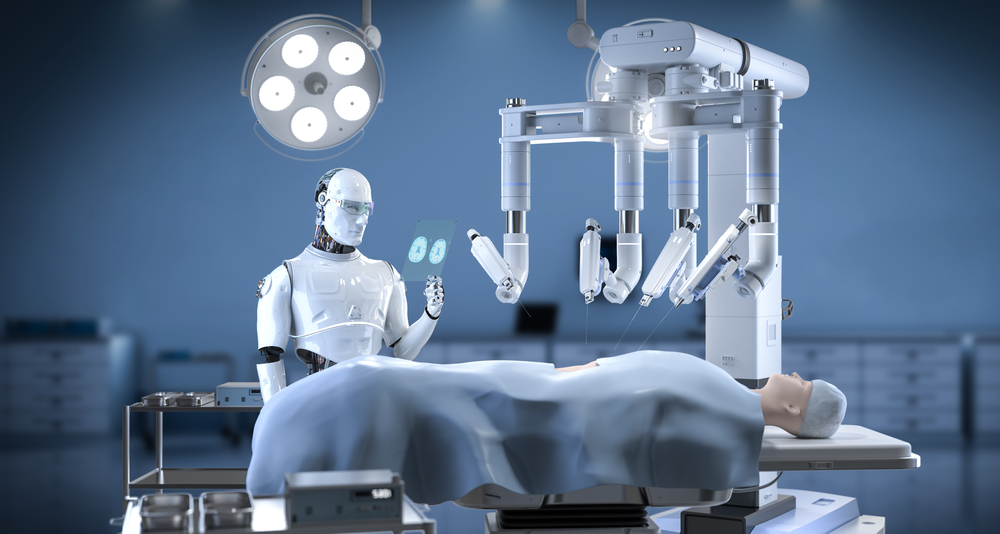
Robotics and Automated Systems in Orthodontic Procedures: The Future of Precision and Efficiency
Orthodontics has always been a field driven by precision and innovation. With the integration of robotics and automated systems, the landscape of orthodontic procedures is evolving at a remarkable pace. What was once a manual and time-consuming process is now becoming faster, more accurate, and less invasive. From robotic-assisted bracket placement to automated aligner manufacturing, technology is transforming both patient experience and clinical outcomes. Moreover, machine learning is also revolutionizing dental care, enhancing diagnostics, streamlining treatment planning, and improving long-term results.
The Role of Robotics in Modern Orthodontic Procedures
1. Robotic-Assisted Bracket Placement
One of the most significant applications of robotics in orthodontics is in bracket positioning and bonding. Traditionally, placing brackets on teeth required the clinician’s steady hand and keen eye, leaving room for minor inaccuracies. Today, robotic systems use precise mapping algorithms to place brackets with exceptional accuracy. This reduces human error, ensuring that the brackets are positioned at the optimal angle and height, leading to more predictable tooth movement and shorter treatment times.
2. Automated Wire Bending and Customization
In the past, archwires were bent manually, making consistency difficult to achieve. However, robotic wire-bending technology has revolutionized this process. Automated machines can now shape and bend wires with millimeter-perfect precision, based on the patient’s digital treatment plan. These custom wires result in more accurate and efficient tooth movement, reducing the need for frequent adjustments and improving overall treatment efficiency.
3. 3D Printing and Automated Aligner Production
The rise of machine learning is also revolutionizing dental care by optimizing the design and production of clear aligners. Automated systems powered by AI and machine learning analyze patient data to generate highly accurate 3D models. These models are then used in conjunction with robotic 3D printers to create custom aligners tailored to each patient’s dental structure. This automation not only speeds up the manufacturing process but also enhances the fit and effectiveness of the aligners, leading to better treatment outcomes.
Machine Learning: Enhancing Precision and Predictability
The convergence of robotics and machine learning in orthodontics is enabling more precise and predictive treatment outcomes.
1. Automated Treatment Planning with AI
Traditionally, orthodontists relied on experience and visual assessments when planning treatments. Today, AI-powered algorithms can analyze vast amounts of patient data, including X-rays, dental scans, and treatment histories. Machine learning is also revolutionizing dental care by identifying patterns that may not be immediately evident to human practitioners. This results in more accurate diagnoses and personalized treatment plans, improving patient outcomes and reducing the risk of complications.
2. Predictive Analytics for Treatment Progress
Automated systems equipped with machine learning can monitor and predict treatment progress. For example, AI-based software can analyze tooth movement over time and alert orthodontists if the treatment is deviating from the expected path. This allows for early intervention and timely adjustments, ensuring better alignment results and reducing overall treatment duration.
Benefits of Robotics and Automation in Orthodontics
The integration of robotics and automated systems into orthodontic procedures offers numerous advantages:
1. Improved Accuracy and Consistency
Robotic systems can perform tasks with a level of precision and consistency that surpasses human capabilities. This reduces errors in bracket placement, wire bending, and aligner production, leading to more predictable and efficient results.
2. Faster and More Efficient Treatments
Automation speeds up traditionally time-consuming processes, such as bracket placement and wire customization. This not only reduces chair time but also shortens the overall duration of orthodontic treatments, benefiting both practitioners and patients.
3. Enhanced Patient Comfort and Satisfaction
With automated systems, treatments become less invasive and more comfortable. For instance, custom robotic wire bending reduces the need for repeated manual adjustments, minimizing discomfort for the patient.
4. Cost-Effectiveness and Efficiency
Although the initial investment in robotic systems may be significant, the long-term benefits include increased efficiency and reduced labor costs. Automated systems allow orthodontic practices to treat more patients with greater accuracy, enhancing profitability and patient satisfaction.
Challenges and Considerations
While the use of robotics and automation in orthodontics offers numerous benefits, it also comes with certain challenges:
1. High Initial Costs
Implementing robotic systems requires a significant financial investment in equipment, software, and training. Smaller practices may find it difficult to justify the upfront expense, although the long-term benefits often outweigh the initial costs.
2. Learning Curve and Integration
Orthodontists and dental staff need to undergo training to effectively use robotic and automated systems. Integrating these technologies into existing workflows may also require time and adaptation.
3. Balancing Technology with Human Expertise
While robotics and machine learning enhance precision, human expertise remains essential. Orthodontists must continue to oversee and customize treatments, ensuring that technology complements rather than replaces clinical judgment.
The Future of Robotics in Orthodontics
The future of orthodontics is undeniably intertwined with robotics and automation. Emerging technologies, such as robotic-assisted surgery, AI-powered diagnostics, and fully automated treatment workflows, will continue to redefine orthodontic care.
In the coming years, we can expect:
– Greater use of AI-driven diagnostics to personalize treatments further.
– Enhanced robotic systems capable of performing complex orthodontic adjustments with minimal human intervention.
– Remote monitoring through automated systems, enabling orthodontists to track patient progress from a distance.
Embracing the Future of Orthodontic Technology
The integration of robotics and automated systems into orthodontic procedures is transforming the field, making treatments more accurate, efficient, and patient-friendly. As machine learning is also revolutionizing dental care, orthodontists can offer more predictable outcomes and improved experiences. While challenges remain, the future of orthodontics lies in harnessing the power of technology to deliver superior patient care and achieve exceptional results.
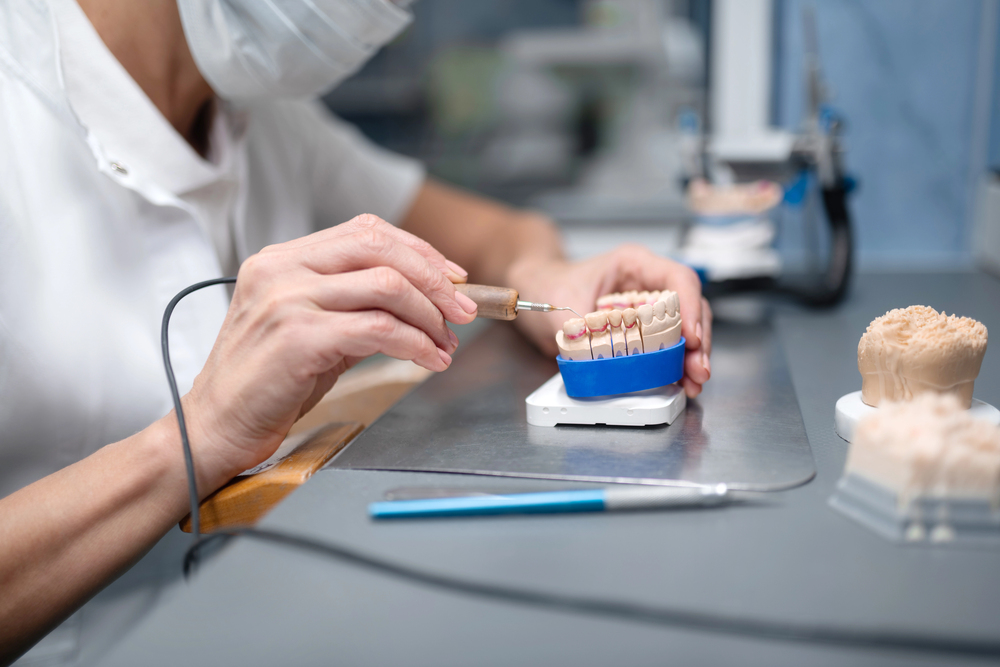
Natural-Looking Dental Prosthetics: A Game-Changer in Smile Rehabilitation
The Rise of Natural-Looking Dental Prosthetics
In recent years, dental prosthetics have undergone a remarkable transformation. Gone are the days of bulky, artificial-looking crowns, dentures, and veneers. Today’s prosthetics are designed to blend seamlessly with natural teeth, offering a flawless and realistic appearance. Patients seeking smile rehabilitation are increasingly turning to long lasting porcelain veneers and lifelike prosthetic solutions to restore both aesthetics and function. This shift reflects the growing demand for dental restorations that enhance beauty without sacrificing authenticity.
As the dental industry embraces advanced materials and precision technology, patients benefit from prosthetics that not only look genuine but also withstand the test of time. Furthermore, for dental professionals, creating natural-looking restorations is more than just a cosmetic service—it reflects a commitment to quality care. After all, trust is the cornerstone of any successful business, and providing patients with durable, natural-looking smiles strengthens the reputation and credibility of dental practices.
The Appeal of Natural-Looking Dental Prosthetics
When it comes to dental prosthetics, appearance matters. Patients desire restorations that are virtually indistinguishable from their natural teeth. The latest advancements in materials and fabrication techniques have made this possible, offering several key benefits:
1. Enhanced Aesthetic Appeal
Modern dental prosthetics replicate the translucency, color variation, and texture of natural teeth. Long lasting porcelain veneers, for example, are meticulously crafted to mimic the light-reflecting properties of enamel. The result is a smile that looks authentic rather than overly polished or artificial.
2. Improved Functionality and Comfort
Beyond aesthetics, today’s prosthetics offer superior functionality. Precision-fit crowns, implants, and dentures restore proper bite alignment and chewing efficiency, preventing further oral health issues. Custom-fitted prosthetics also feel more comfortable, reducing irritation and the risk of slippage.
3. Long-Term Durability
High-quality dental prosthetics are designed to last. Materials like zirconia and porcelain are resistant to chipping and staining, ensuring longevity. With proper care, long lasting porcelain veneers can maintain their flawless appearance for 10–15 years or more.
4. Boosted Confidence and Self-Esteem
A natural-looking smile enhances confidence. Patients who previously felt self-conscious about missing, damaged, or discolored teeth experience a significant boost in self-esteem after smile rehabilitation.
Key Technologies Behind Natural-Looking Prosthetics
The shift toward realistic dental restorations is driven by technological innovations and advanced materials. Today’s dentists leverage cutting-edge techniques to deliver natural and precise results.
Digital Smile Design (DSD)
Digital Smile Design (DSD) is a revolutionary technology that allows dentists to create a virtual preview of the patient’s new smile. By digitally mapping the face and teeth, dental professionals can design prosthetics that perfectly match facial features, ensuring a harmonious and natural appearance.
3D Printing and CAD/CAM Technology
Computer-aided design and manufacturing (CAD/CAM) and 3D printing have revolutionized prosthetic fabrication. These technologies enable the creation of highly accurate, custom-fitted crowns, bridges, and veneers with lifelike detail. The precision of these methods ensures consistency in color, shape, and fit.
Porcelain and Zirconia Materials
Both long lasting porcelain veneers and zirconia-based prosthetics offer superior aesthetic and functional properties. Porcelain veneers are popular for their natural translucency, while zirconia provides exceptional durability, making it ideal for dental crowns and implants.
Porcelain Veneers: The Gold Standard for Natural Aesthetics
Among the various types of dental prosthetics, long lasting porcelain veneers are widely regarded as the gold standard for smile enhancement. These ultra-thin, custom-crafted shells are bonded to the front of the teeth, concealing imperfections such as discoloration, chips, and minor misalignment.
Advantages of Porcelain Veneers
– Natural Appearance: Porcelain closely mimics the translucency and texture of natural teeth, making veneers virtually undetectable.
– Durability: With proper care, long lasting porcelain veneers can maintain their flawless look for well over a decade.
– Minimally Invasive: The procedure typically requires minimal enamel removal, preserving much of the natural tooth structure.
Are Veneers Right for You?
Porcelain veneers are ideal for individuals seeking to correct cosmetic flaws without extensive dental surgery. They are particularly effective for:
– Closing small gaps between teeth.
– Covering stains that resist whitening treatments.
– Restoring symmetry to uneven or misshapen teeth.
The Patient Experience: Why Trust Matters
In dental rehabilitation, achieving a natural-looking smile requires more than just technical expertise—it demands trust. Patients entrust their oral health and appearance to their dentists, expecting both skill and integrity. Trust is the cornerstone of any successful business, especially in dentistry, where patient satisfaction is vital for long-term success.
Building Trust Through Quality Care
– Transparent Communication: Dentists who openly discuss treatment options, costs, and expected outcomes build confidence with their patients.
– Consistency in Results: Delivering natural, high-quality prosthetics consistently strengthens patient trust and encourages referrals.
– Post-Treatment Support: Providing thorough aftercare guidance, especially for long lasting porcelain veneers, helps patients maintain their smile’s longevity, reinforcing trust in the practice.
Caring for Natural-Looking Dental Prosthetics
To preserve the beauty and longevity of dental prosthetics, proper oral care is essential. Patients are advised to:
– Practice Good Oral Hygiene: Regular brushing, flossing, and professional cleanings prevent plaque buildup, protecting both natural teeth and prosthetics.
– Avoid Damaging Habits: Biting nails, chewing on hard objects, or using teeth as tools can damage veneers and crowns.
– Wear Night Guards: For patients who grind their teeth, wearing a custom night guard protects both the prosthetics and natural teeth.
– Schedule Regular Checkups: Routine dental visits allow for early detection of any issues and ensure the longevity of the prosthetics.
The New Standard in Smile Rehabilitation
The evolution of natural-looking dental prosthetics has transformed smile rehabilitation, offering patients lifelike results that enhance both appearance and function. With innovations like long lasting porcelain veneers and precision digital technology, today’s prosthetics are virtually indistinguishable from natural teeth. For dental professionals, prioritizing realistic, high-quality restorations not only delivers exceptional patient outcomes but also strengthens credibility and fosters long-term trust.
Ultimately, as the dental industry continues to refine its techniques and materials, the future of smile rehabilitation looks brighter—and more natural—than ever before.

The Celebrity Smile Effect: Social Media’s Influence on Aesthetic Dentistry Trends in 2025
In today’s digital age, social media platforms have become the ultimate stage for personal branding, with influencers, celebrities, and everyday users showcasing their lives through high-definition photos and videos. Among the many beauty trends that have emerged from this online culture, one stands out prominently—dental aesthetics. In 2025, the pursuit of the perfect smile has never been more influential, as social media continues to shape aesthetic dentistry trends. From professional teeth whitening to cosmetic procedures such as veneers and gum contouring, the pressure to whiten your teeth and achieve a flawless smile has become a global phenomenon.
The Power of the Celebrity Smile
Celebrities have long dictated beauty standards, but with social media, their influence has become even more direct and accessible. Platforms like Instagram, TikTok, and YouTube showcase picture-perfect smiles, setting the bar for what is considered attractive and desirable. Aesthetic dentistry has responded to this demand by offering a range of treatments that allow everyday individuals to replicate the dazzling smiles of their favorite stars.
One of the most significant trends in 2025 is the rise of ultra-natural-looking cosmetic dental procedures. Celebrities such as actors, models, and influencers have moved away from overly bright, artificial-looking teeth toward more natural, healthy-looking smiles. This shift has influenced the way people approach dental aesthetics, with more patients seeking treatments that enhance their natural teeth rather than completely altering them.
Social Media’s Role in Driving Aesthetic Dentistry
Social media has become a catalyst for aesthetic dentistry’s rapid evolution. Here’s how it is shaping industry trends in 2025:
1. The Rise of the “Instagram Smile”
Social media algorithms prioritise engaging and visually appealing content. As a result, perfect smiles have become a focal point in selfies, branding, and influencer marketing. The desire to have an “Instagram smile” has driven demand for professional teeth whitening treatments, composite bonding, and minimally invasive cosmetic enhancements.
2. Viral Trends and DIY Whitening Methods
TikTok and Instagram are flooded with viral hacks promising to whiten your teeth instantly. While some home remedies, such as baking soda and activated charcoal, have gained traction, dentists have warned against their potential risks. In response, professional whitening treatments using safe, advanced technologies have seen a surge in popularity.
3. Increased Demand for Veneers and Smile Makeovers
Influencers often share their experiences undergoing full smile makeovers, fueling the demand for porcelain veneers and other aesthetic procedures. In 2025, there is a growing preference for thinner, more natural-looking veneers that preserve more of the natural tooth structure.
4. AI-Powered Smile Simulations
Many dental clinics now use artificial intelligence (AI) and augmented reality (AR) to offer virtual smile simulations. Patients can preview their post-treatment results before committing, allowing them to tailor their procedures to their personal preferences.
5. Sustainability in Aesthetic Dentistry
With increasing awareness of environmental sustainability, eco-friendly dental products and procedures have gained traction. Biodegradable aligners, organic whitening agents, and ethically sourced dental materials are now preferred choices for both celebrities and everyday patients.
The Psychological Impact of the Perfect Smile
Social media’s obsession with the perfect smile has had both positive and negative effects. On one hand, improved access to aesthetic dentistry has boosted self-confidence for many individuals. On the other hand, the unrealistic beauty standards promoted online can create undue pressure and self-esteem issues.
In 2025, mental health professionals and dental practitioners are working together to ensure that cosmetic dentistry remains a positive, confidence-boosting choice rather than a response to social pressure. Transparency about procedures, realistic expectations, and ethical advertising play key roles in maintaining a healthy perspective on smile aesthetics.
The Future of Aesthetic Dentistry: What’s Next?
Looking ahead, aesthetic dentistry will continue evolving alongside technological advancements and shifting beauty standards. Some emerging trends include:
– Biotechnology and Regenerative Dentistry – Researchers are exploring ways to naturally restore enamel and improve tooth health, reducing the need for artificial restorations.
– Teledentistry Consultations – More dental professionals offer virtual consultations, allowing patients to explore cosmetic options before visiting a clinic.
– AI-Powered Custom Treatments – With AI advancements, treatments are becoming more personalised, offering tailored whitening plans and smile designs.
Social media has undeniably shaped the way we perceive beauty, and in 2025, the influence of the “celebrity smile effect” continues to drive the demand for aesthetic dentistry. Whether through professional teeth whitening, natural-looking veneers, or AI-powered smile design, the desire to whiten your teeth and achieve a picture-perfect smile remains stronger than ever. As technology and ethical practices advance, the industry is poised to create healthier, more natural, and more accessible solutions for those looking to enhance their smiles in a responsible way.

The Ultimate Guide to Oral Care: Tips for a Healthy Smile
A beautiful and healthy smile is a reflection of good oral hygiene and overall well-being. Taking care of your teeth and gums not only prevents dental problems but also boosts confidence. Whether you’re focusing on daily care, professional treatments, or orthodontics, here’s the ultimate guide to maintaining optimal oral health.
1. The Importance of Oral Hygiene
Maintaining oral hygiene is essential for preventing common dental problems like cavities, gum disease, and bad breath. Neglecting your teeth can lead to severe health issues, including infections that may affect other parts of your body. A consistent oral care routine is the first step toward a healthier smile.
Daily Oral Care Routine
– Brushing: Brush your teeth at least twice a day using fluoride toothpaste. Use a soft-bristled toothbrush and follow a gentle circular motion to remove plaque effectively.
– Flossing: Flossing once a day helps remove food particles and plaque between teeth where a toothbrush cannot reach.
– Mouthwash: Use an antibacterial mouthwash to reduce bacteria and freshen your breath.
– Tongue Cleaning: Bacteria accumulate on the tongue, leading to bad breath. Use a tongue scraper or your toothbrush to clean it regularly.
2. Diet and Its Impact on Oral Health
What you eat significantly affects your teeth and gums. A balanced diet supports strong teeth, while unhealthy food choices can lead to decay and other dental problems.
Best Foods for Oral Health
– Dairy products (cheese, milk, yogurt) – Strengthen enamel with calcium and phosphates.
– Leafy greens (spinach, kale) – Provide essential vitamins for gum health.
– Crunchy fruits and vegetables (apples, carrots, celery) – Help clean teeth naturally.
– Nuts and seeds – Contain minerals that strengthen teeth.
Foods to Avoid
– Sugary snacks and beverages – Contribute to cavities.
– Acidic foods (citrus fruits, soda) – Weaken enamel.
– Sticky candies – Stay on teeth longer, increasing the risk of decay.
3. The Role of Orthodontics in Oral Health
Orthodontics plays a crucial role in enhancing both the function and aesthetics of your teeth. If you have misaligned teeth or bite issues, orthodontic treatments can help improve your oral health and overall appearance.
Common Orthodontic Treatments
– Braces: Traditional metal braces help correct severe misalignment and bite issues over time.
– Clear Aligners: Aesthetic and removable options like Invisalign straighten teeth discreetly.
– Retainers: Used after braces or aligner treatment to maintain results and prevent teeth from shifting.
– Palatal Expanders: Help widen the upper jaw in children to create space for proper tooth alignment.
Orthodontics is not just about appearance; misaligned teeth can lead to difficulties in chewing, speech problems, and increased risk of tooth decay and gum disease. Early assessment by an orthodontist can prevent future complications.
4. Professional Dental Care: Regular Check-ups and Treatments
Even with the best oral care routine, professional dental visits are necessary to ensure optimal dental health.
Why Regular Dental Visits Matter
– Early Detection of Problems: Dentists can identify cavities, gum disease, and other issues before they become severe.
– Professional Cleaning: Removes plaque and tartar buildup that regular brushing may miss.
– Fluoride Treatment: Strengthens enamel and prevents cavities.
– Oral Cancer Screening: Early detection can be lifesaving.
How Often Should You Visit the Dentist?
It’s recommended to visit your dentist at least twice a year. However, if you have specific dental issues or are undergoing orthodontic treatment, more frequent visits may be necessary.
5. Preventing Common Dental Issues
Understanding common dental problems and how to prevent them is key to maintaining a healthy smile.
Cavities
– Brush and floss daily.
– Reduce sugar intake.
– Use fluoride toothpaste.
Gum Disease
– Maintain good oral hygiene.
– Avoid smoking.
– Visit your dentist regularly for cleanings.
Tooth Sensitivity
– Use desensitizing toothpaste.
– Avoid acidic foods.
– Consult your dentist for potential underlying causes.
Bad Breath (Halitosis)
– Brush your teeth and tongue regularly.
– Drink plenty of water.
– Avoid foods with strong odors like garlic and onions.
– Visit your dentist to rule out infections or gum disease.
6. Special Considerations for Children’s Oral Health
Good oral habits should start early to ensure a lifetime of healthy smiles.
Tips for Parents
– Supervise Brushing: Young children should be guided until they can brush effectively on their own.
– Limit Sugary Snacks: Excess sugar contributes to cavities.
– Encourage Drinking Water: Water helps wash away food particles and bacteria.
– Consider Early Orthodontic Assessment: The American Association of Orthodontists recommends that children have an initial orthodontic evaluation by age seven.
7. The Future of Oral Care: Innovations in Dentistry
Advancements in dental technology continue to improve patient experience and treatment outcomes.
Emerging Trends in Dentistry
– Teledentistry: Virtual consultations for increased accessibility.
– 3D Printing: Custom-made dental restorations for a perfect fit.
– Laser Dentistry: Minimally invasive procedures with faster healing times.
– AI in Dentistry: AI-driven diagnostics for early disease detection.
A healthy smile is achievable with a combination of daily care, proper diet, professional check-ups, and, when necessary, orthodontic treatments. By following these guidelines, you can maintain strong teeth, healthy gums, and a beautiful smile for years to come. Investing in oral health today ensures a lifetime of benefits, so make dental care a priority and smile with confidence!

How Safe Are Cosmetic Dental Treatments?
Cosmetic dentistry has become increasingly popular as more people seek to enhance their smiles. From teeth whitening to dental veneers and Invisalign, the options available today are more advanced and accessible than ever. However, with the rising demand for aesthetic dental treatments, concerns about their safety have also emerged. Are these treatments safe? What are the potential risks and how can patients ensure they receive the best care? This article explores the safety aspects of cosmetic dental procedures, highlighting key considerations for those looking to improve their smiles.
Understanding Cosmetic Dentistry Safety
Cosmetic dental treatments are generally safe when performed by qualified professionals. Advancements in dental technology and materials have significantly reduced risks, making procedures more effective and comfortable. However, like any medical or dental treatment, there are potential risks and side effects. The key to safety lies in selecting the right dentist, understanding the procedure, and following post-treatment care instructions.
Common Cosmetic Dental Procedures and Their Safety
1. Teeth Whitening
Teeth whitening is one of the most sought-after cosmetic dental treatments. It can be performed in a dental office or at home using prescribed whitening kits. While generally safe, overuse or misuse of whitening products can cause tooth sensitivity and gum irritation. Professional whitening treatments use controlled amounts of bleaching agents to minimize risks.
2. Dental Veneers
Veneers are thin porcelain or composite shells bonded to the front surface of teeth to improve their appearance. The procedure involves minor enamel removal, which is irreversible. While veneers are safe, poorly fitted or excessively trimmed teeth can lead to sensitivity and weakened tooth structure. Choosing an experienced cosmetic dentist ensures the best results with minimal risks.
3. Invisalign
Invisalign is a popular orthodontic treatment that uses clear, removable aligners to straighten teeth without the need for traditional metal braces. Many patients prefer Invisalign because the aligners are nearly invisible, making them a discreet option for improving their smile. Additionally, Invisalign aligners are custom-made for each patient, ensuring a comfortable fit while gradually shifting teeth into the desired position. With its convenience and aesthetic appeal, Invisalign has become a leading choice for individuals seeking a more confident and seamless orthodontic experience. Unlike conventional braces, Invisalign aligners are removable, reducing the risk of gum irritation and plaque buildup. However, for optimal results, patients must wear their aligners for at least 20-22 hours a day. Neglecting to follow the treatment plan can lead to prolonged treatment time and ineffective results. Additionally, using non-professional or over-the-counter clear aligners can pose serious risks to dental health.
4. Dental Bonding
Dental bonding involves applying a tooth-colored resin to repair chips, cracks, or discoloration. It is a minimally invasive procedure and generally safe. However, bonded teeth are not as strong as natural enamel and may be prone to chipping over time. Regular dental check-ups help monitor bonded teeth and ensure their longevity.
5. Dental Implants
Dental implants replace missing teeth with artificial roots and crowns. They are a long-lasting and effective solution but require surgical placement. The procedure has a high success rate when performed by skilled professionals. However, improper implant placement, poor oral hygiene, or pre-existing health conditions can lead to complications such as infection or implant failure.
Factors That Affect the Safety of Cosmetic Dentistry
1. Dentist’s Expertise – The qualifications and experience of the dentist play a crucial role in ensuring safety. Always choose a licensed and reputable professional for cosmetic procedures.
2. Patient’s Oral Health – Pre-existing dental conditions such as gum disease or cavities should be treated before undergoing cosmetic procedures.
3. Quality of Materials Used – High-quality materials contribute to better durability and safety. Cheaper alternatives may compromise results and lead to complications.
4. Adherence to Post-Treatment Care – Following aftercare instructions, such as wearing retainers after Invisalign treatment or avoiding staining foods after whitening, ensures long-term success.
5. Customized Treatment Plans – Every patient’s dental needs are unique. Personalized treatment plans tailored by professionals reduce risks and improve outcomes.
Potential Risks and How to Avoid Them
While most cosmetic dental treatments are safe, some risks include:
– Tooth Sensitivity – Common after whitening and veneer placement. Using desensitizing toothpaste can help.
– Gum Irritation – Often occurs with ill-fitting aligners or excessive whitening gel use.
– Infection – Rare but possible with implants if proper hygiene isn’t maintained.
– Allergic Reactions – Some individuals may react to dental materials. Discussing allergies with the dentist beforehand can prevent this.
– Unrealistic Expectations – Cosmetic dentistry improves appearance but may not always achieve perfection. A thorough consultation with the dentist helps set realistic goals.
Cosmetic dental treatments, including Invisalign, veneers, and teeth whitening, are generally safe when performed by trained professionals. The key to ensuring a successful and risk-free experience lies in choosing a reputable dentist, following proper care guidelines, and understanding the procedure. Before undergoing any cosmetic dental treatment, consult a qualified professional to discuss the risks, benefits, and best options for your specific dental needs. With proper care and expert guidance, achieving a beautiful and healthy smile is not only possible but also safe.

Restorative Dentistry: Exploring Dental Services for Tooth Repair and Replacement
A healthy smile is essential for overall well-being, but dental issues such as decay, fractures, and missing teeth can compromise both function and aesthetics. Fortunately, restorative dentistry offers various solutions to repair and replace damaged teeth, improving oral health and quality of life. From dental fillings to implants, modern dental services provide effective treatments tailored to individual needs.
Understanding Restorative Dentistry
Restorative dentistry focuses on diagnosing, treating, and managing oral health issues that affect the teeth, gums, and supporting structures. The primary goal is to restore function, prevent further damage, and enhance the appearance of the patient’s smile. Whether it’s a minor cavity or complete tooth loss, restorative treatments help maintain a strong and healthy dental structure.
Common Restorative Dental Procedures
Several procedures fall under the umbrella of restorative dentistry, each addressing specific issues related to tooth repair and replacement. Here are some of the most common treatments:
1. Dental Fillings
One of the most frequently performed restorative procedures, dental fillings are used to repair teeth affected by cavities or minor fractures. When decay erodes the enamel, it creates a cavity that must be cleaned and filled to prevent further deterioration. Fillings can be made from various materials, including:
– Composite Resin: Tooth-colored and aesthetically pleasing, ideal for front and visible teeth.
– Amalgam: Durable and cost-effective, but silver in color.
– Ceramic: Long-lasting and stain-resistant, often used for larger fillings.
– Gold: Highly durable but more expensive and noticeable.
Dental fillings restore the tooth’s structure and function, preventing further decay and strengthening the tooth.
2. Dental Crowns
A dental crown is a custom-made cap that covers a damaged or weakened tooth. Crowns are commonly used after a large filling, root canal therapy, or when a tooth is cracked or broken. They provide protection, restore function, and improve aesthetics. Crowns can be made from porcelain, metal, or a combination of both.
3. Dental Bridges
When one or more teeth are missing, dental bridges provide a reliable replacement option. A bridge consists of artificial teeth anchored to adjacent natural teeth or implants. This treatment restores the ability to chew and speak properly while preventing neighboring teeth from shifting out of alignment.
4. Dental Implants
For a permanent tooth replacement solution, dental implants offer exceptional durability and functionality. A titanium post is surgically implanted into the jawbone, serving as an artificial root. A custom-made crown is then attached to restore the appearance and function of a natural tooth. Implants promote jawbone health and can last a lifetime with proper care.
5. Dentures
Dentures are removable appliances that replace multiple missing teeth. They come in full or partial forms, depending on the extent of tooth loss. Modern dentures are more comfortable and natural-looking than ever before, helping patients regain confidence in their smiles.
The Importance of Restorative Dentistry
Restorative dental services are essential for maintaining oral health and overall well-being. Some key benefits include:
– Preventing Further Damage: Restorative treatments like dental fillings and crowns stop decay from spreading and strengthen teeth.
– Restoring Functionality: Repairing or replacing damaged teeth improves the ability to chew and speak properly.
– Enhancing Aesthetics: Modern materials ensure that restorations blend seamlessly with natural teeth.
– Boosting Confidence: A restored smile enhances self-esteem and improves social interactions.
Choosing the Right Restorative Treatment
Selecting the most suitable restorative procedure depends on the severity of the issue, budget, and personal preferences. Consulting with a qualified dentist is essential to determine the best treatment plan. Regular check-ups and preventive care can also help detect issues early and minimize the need for extensive restorations.
Restorative dentistry plays a crucial role in preserving and enhancing oral health. Whether it’s a simple dental filling or a full-mouth restoration, modern dental solutions offer effective ways to repair and replace teeth. By seeking timely dental care, individuals can maintain a healthy, functional, and beautiful smile for years to come.

Advanced Technologies for TMJ Treatment: What’s New in 2025?
Temporomandibular joint (TMJ) disorders affect millions of people worldwide, causing discomfort, pain, and difficulty with basic functions like chewing and speaking. Advances in medical and dental technologies have revolutionized the diagnosis and treatment of TMJ disorders, providing patients with more effective and less invasive options. In 2025, new innovations promise to make managing TMJ disorders even more efficient and personalized, with breakthroughs in dental software and other cutting-edge tools taking center stage.
The Evolving Landscape of TMJ Treatment
Traditionally, TMJ disorders were managed using a combination of physical therapy, medication, oral appliances, and, in severe cases, surgery. However, these treatments often relied heavily on trial and error, as precise diagnosis and individualized treatment plans were challenging. Recent advancements in dental software and imaging technologies are changing this narrative, enabling clinicians to pinpoint the root cause of TMJ disorders and develop tailored interventions with unprecedented accuracy.
Innovative Diagnostic Tools
One of the most significant developments in 2025 is the use of 3D imaging technologies. Cone-beam computed tomography (CBCT) scans are now more accessible and detailed, providing high-resolution images of the temporomandibular joint. These scans allow dental professionals to visualize the joint’s structure, detect abnormalities, and assess the extent of damage with precision.
Paired with advanced dental software, CBCT scans can now be integrated into virtual treatment planning systems. These systems create comprehensive models of a patient’s jaw and surrounding structures, allowing for a thorough analysis of how the TMJ interacts with other components of the oral cavity. This level of detail ensures that clinicians can identify the exact cause of pain, whether it’s joint degeneration, misalignment, or muscle tension.
AI-Powered Dental Software
Artificial intelligence (AI) is playing a transformative role in TMJ diagnosis and treatment. AI-powered dental software analyzes patient data—including imaging, medical history, and symptoms—to provide real-time insights and recommendations. These tools can identify patterns that may not be immediately apparent to human clinicians, enhancing diagnostic accuracy.
For example, AI algorithms can detect subtle changes in joint movement and alignment from CBCT scans or even track how TMJ symptoms evolve over time. This enables dentists to monitor progress and adjust treatment plans dynamically. Additionally, AI is being integrated into wearable devices that patients can use at home to track jaw movements and muscle activity, creating a continuous feedback loop between patients and their care providers.
Personalized Oral Appliances
Oral appliances remain a cornerstone of TMJ treatment, but new technologies are making them more effective than ever. In 2025, custom oral appliances are being designed with the help of 3D printing and advanced dental software. These tools enable the creation of appliances that are perfectly tailored to a patient’s unique anatomy, ensuring optimal comfort and effectiveness.
Moreover, some appliances now come equipped with embedded sensors that collect data on jaw movement and pressure while in use. This information is transmitted to dental software, allowing clinicians to assess how well the appliance is working and make adjustments as needed. Patients benefit from a more personalized approach that maximizes relief and minimizes discomfort.
Minimally Invasive Procedures
While surgical interventions are sometimes necessary for severe TMJ disorders, advancements in technology are making these procedures less invasive and more precise. Robotic-assisted surgeries are becoming more common, allowing for greater accuracy and reduced recovery times. Additionally, regenerative medicine techniques, such as platelet-rich plasma (PRP) injections and stem cell therapies, are gaining traction as viable options for repairing damaged joint tissues.
These minimally invasive treatments are often guided by dental software that maps out the procedure in advance, ensuring that every step is carefully planned and executed. This reduces the risk of complications and improves outcomes for patients.
The Role of Telehealth
Telehealth has become an integral part of TMJ care in 2025, thanks to advancements in digital communication platforms and wearable devices. Patients can now consult with specialists remotely, sharing data from their wearable sensors and dental software directly with their providers. This eliminates the need for frequent in-person visits while maintaining high-quality care.
For instance, patients with TMJ disorders can use mobile apps to report symptoms, track progress, and receive personalized exercises or recommendations. Dental professionals can analyze this data through their software systems and provide tailored advice or adjustments to treatment plans without requiring the patient to visit the clinic.
Future Directions
As technology continues to evolve, the future of TMJ treatment looks promising. Researchers are exploring the potential of virtual reality (VR) for pain management, offering immersive environments that help patients reduce stress and relax their jaw muscles. Additionally, advancements in genomics may lead to personalized medicine approaches, where treatments are tailored based on a patient’s genetic profile.
AI and dental software will likely become even more sophisticated, integrating seamlessly with wearable devices and imaging tools to provide a holistic view of TMJ health. These technologies will empower both patients and clinicians, fostering a more collaborative approach to care.
The advancements in TMJ treatment technologies in 2025 are transforming how dental professionals diagnose and manage this complex condition. From AI-powered dental software to custom oral appliances and minimally invasive procedures, these innovations are providing patients with more effective and personalized solutions. As the field continues to grow, individuals suffering from TMJ disorders can look forward to improved outcomes and a better quality of life.
